From viral TikTok challenges to glowing product reviews, user-generated content is shaping the way we consume, interact with, and trust brands.
But the true power of UGC goes far beyond a few trending hashtags. Get ready to explore the surprising UGC statistics that will make you rethink everything you thought you knew about user-generated content.
Start Free Trial
Highlight real-time activities like reviews, sales & sign-ups.
Top UGC Statistics
Over 66% of people decide to buy clothes based on reviews and comments from other users.
Millennials (young adults) find user-made content 20% more helpful for buying things than other types of ads.
More than 70% of people read or watch reviews before buying something.
About 82% of people think about buying something new after seeing a friend or connection post about it.
Almost 92% of people trust reviews and user posts more than advertisements when shopping.
Instagram posts with user content get 70% more likes and comments than those with only brand content.
Only 16% of companies have plans to use user-made content in their marketing.
User-made content gets 28% more responses from people than professional ads.
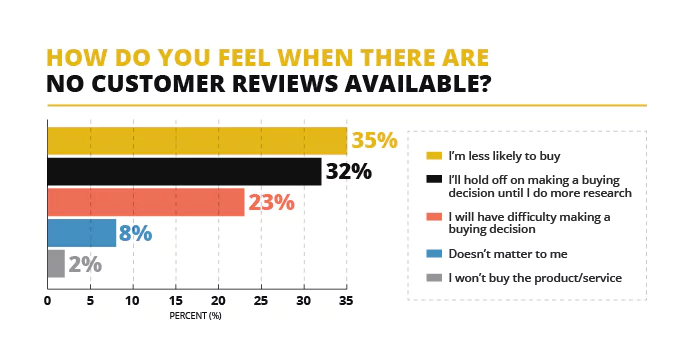
The Power of UGC
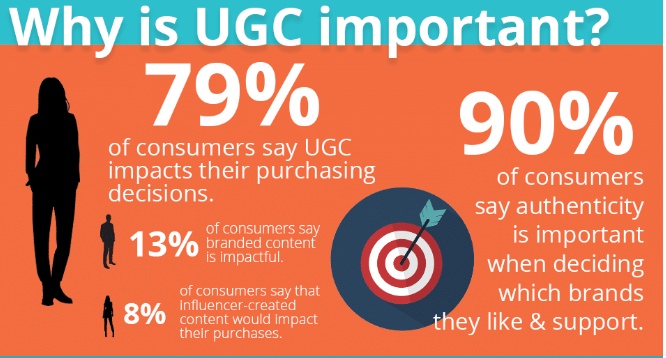
User-generated content is becoming one of the best marketing strategies in the world.
It is one of the most authentic marketing content forms to promote and boost online shopping of your products.
It receives more views and reaches a bigger audience. If the entire industry is using User generated content, then there must be a good reason.
There are more and more user generated content being used for social media ads.
No company would invest in an idea if it did not show promise. You can see the same is backed by the user generated content statistics.
What Drives UGC’s Impact: Psychological Factors at Play
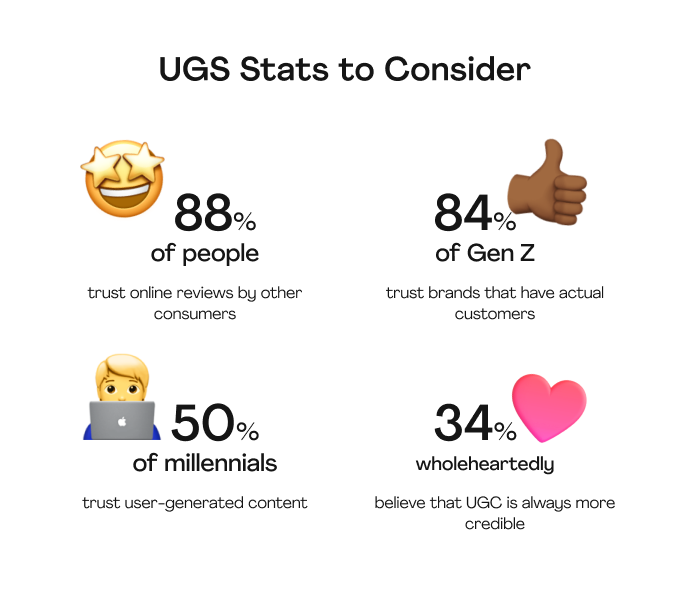
Customers prefer user-generated content as it is a big factor in establishing trust.
A person is much more likely to believe the reviews and positive comments of another customer compared to paid advertisements while shopping online.
These subtle psychological influences help draw customers to your brand.
If a customer trusts your brand, then the likelihood of them purchasing your product will go up infinitely, which will also result in an improved brand reputation.
It also works on multiple channels.
Pairing them up with paid ads could lead to a UGC popping up on a prospective customer’s feed if a customer sees a UGC review while conducting their own research on a product by someone in their social circle who encourages them to try it out.
User generated content allows for a dialogue of sorts to open up between the brand and the customer. This also leads to increased customer loyalty.
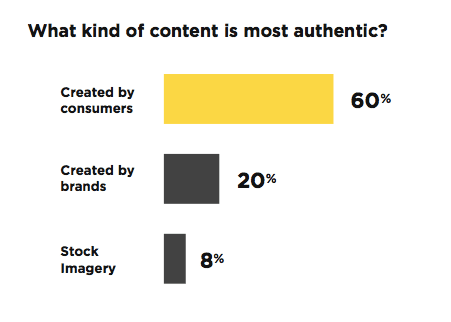
Why Traditional Marketing Is Losing to UGC
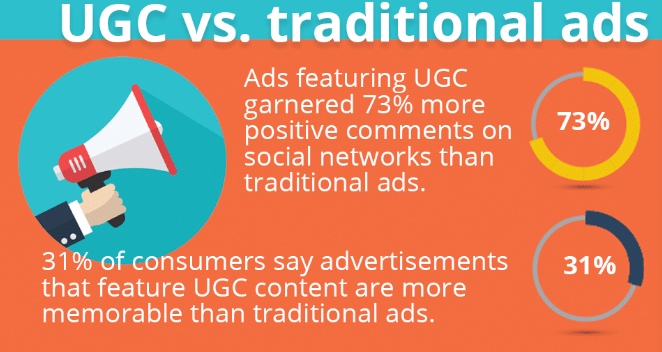
Traditional marketing cannot keep up or match with user generated content for a few simple reasons:
UGCs are very inexpensive compared to traditional marketing. It chalks up to a lot of savings for the company.
Millennials find UGC more authentic compared to self-promotion by even their favorite brands. The trust factor in official brand-authored content is much lower in comparison to UGC.
UGC psychologically influences the customer to buy a product. When you see an existing customer happy, you are more likely to buy the product.
These are some of the key reasons why, in today’s world, traditional marketing campaigns like email marketing, etc, cannot compete with user-generated content.
It is just simply a better and more trustworthy form of marketing and shows better results. This fact is backed by the user generated content statistics.
Start Free Trial
Highlight real-time activities like reviews, sales & sign-ups.
Industry-Specific UGC Stats & Facts
You can use user generated content across multiple industries and for a wide range of products. Each category has shown different content statistics, which indicate a wide range of responses from the customers. Take a look at this ugc. stats from different industries:
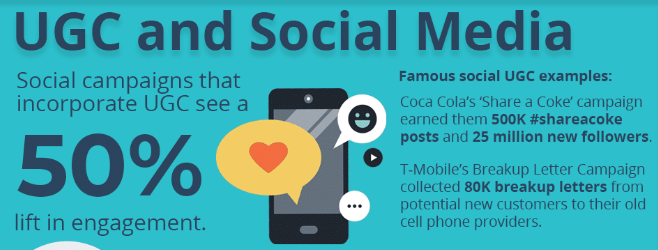
UGC impacts on purchase decisions
1. Millennials find user-generated content (UGC) to be 20% more effective for making purchasing decisions compared to other types of media.
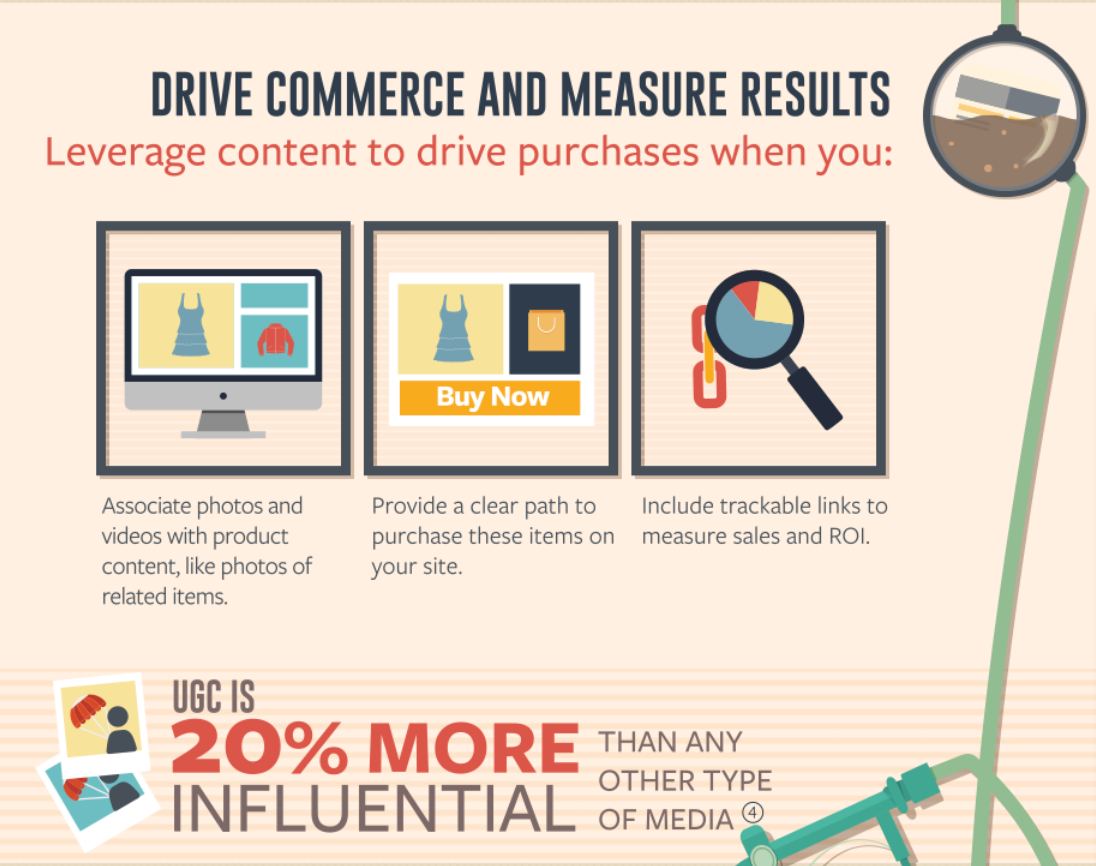
- User content creation has shown that millennial internet users prefer them over any other form of media, especially email marketing, while making purchasing decisions.
- This can be because of any of the multiple reasons like trust, authenticity, content strategy, a familiar source, word of mouth etc.
2. About 82% of people say they have thought about buying a new product after seeing user-generated content (UGC) from someone they know.
- This stat is hardly surprising since everybody tends to trust a product review by someone they know. Customer content just adds a layer of authenticity and reassurance and is a vital component in promoting the product.
3. Customer reviews on the website can increase conversion rates by 41%
User-Generated Content Statistics for Beauty
4. Over 65% of Indian consumers aged 25 to 44 mainly consume user-generated content about beauty, health, and wellness.
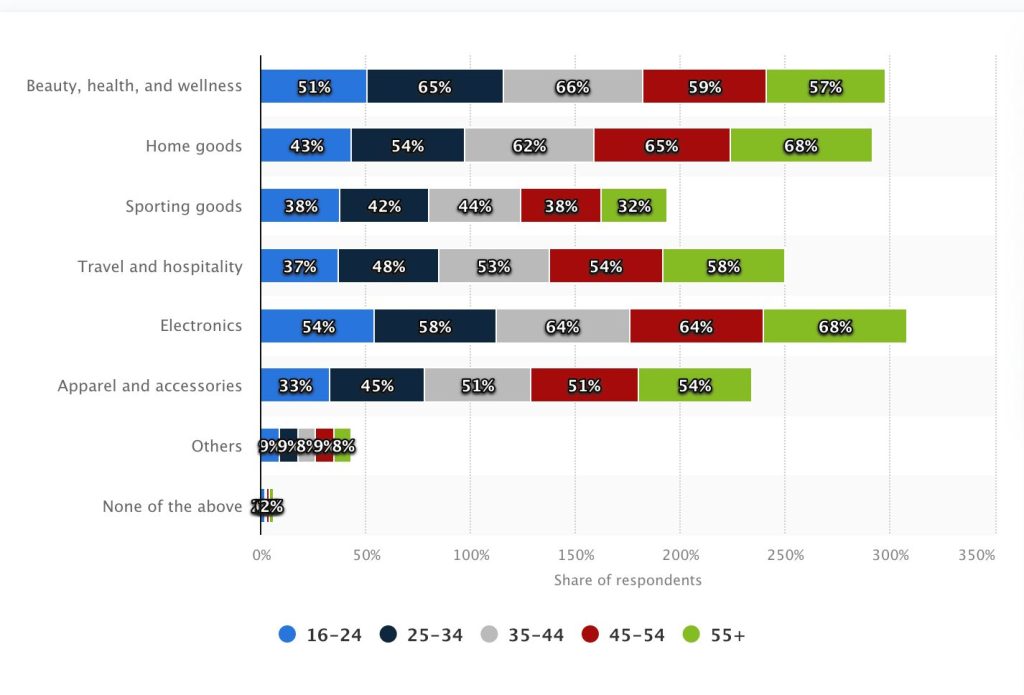
5. Nearly 92% of people trust user reviews and content more than advertisements when buying products.
- In the beauty and wellness industry customer reviews are paramount. They help other potential customers decide if they want to purchase the product or not.
- Thus it is understandable that user generated product videos would have such a big impact.
6. Surveys show that 86% of customers prefer the authenticity of UGC while choosing products to buy.
7. A recent survey showed that while buying cosmetics, 61% of the customers preferred UGCs over traditional media.
User-Generated Content Statistics for Travel
8. The estimated value of the Travel and Tourism UGC market by FMI was $184 million dollars. The net value of this market is project to reach almost $750 million dollars by 2032
9. User-generated content (UGC) engages customers 28% better than professionally made advertisements.
10. This has a lot to do with the fact that almost 70% of customers report that they had their trust broken by a travel agency.
- Thus since UGC provokes a better sense of trust, the conversion rates for UGC are better.
Start Free Trial
Highlight real-time activities like reviews, sales & sign-ups.
User-Generated Content Statistics for Fashion & Apparel
11. 66% customers make the final decision based on the amount of reviews available.
- The reviews of a product are one of the most common UGC used. While buying clothing and other accessories, past reviews by existing customers help a lot. It helps determine the quality, durability, looks etc of the product.
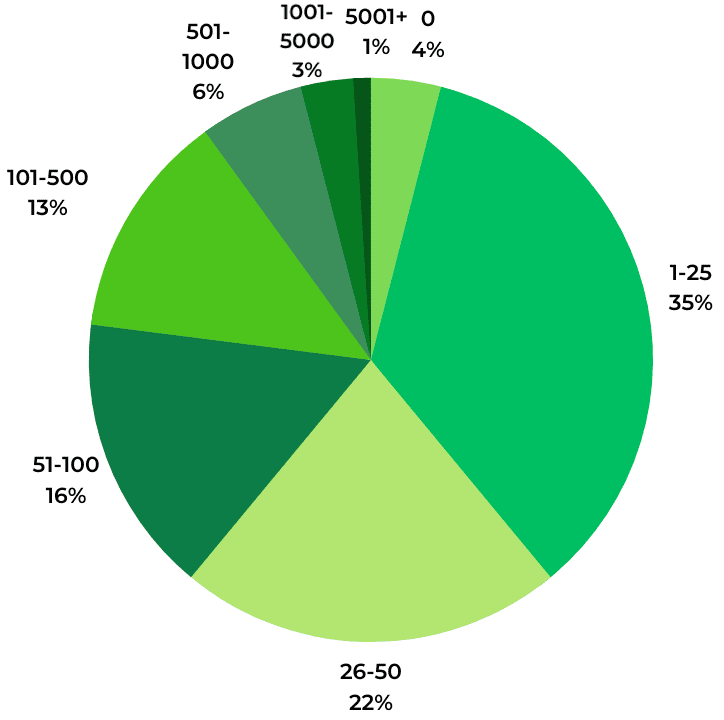
12. When buying footwear a massive 85% of people check the reviews regularly.
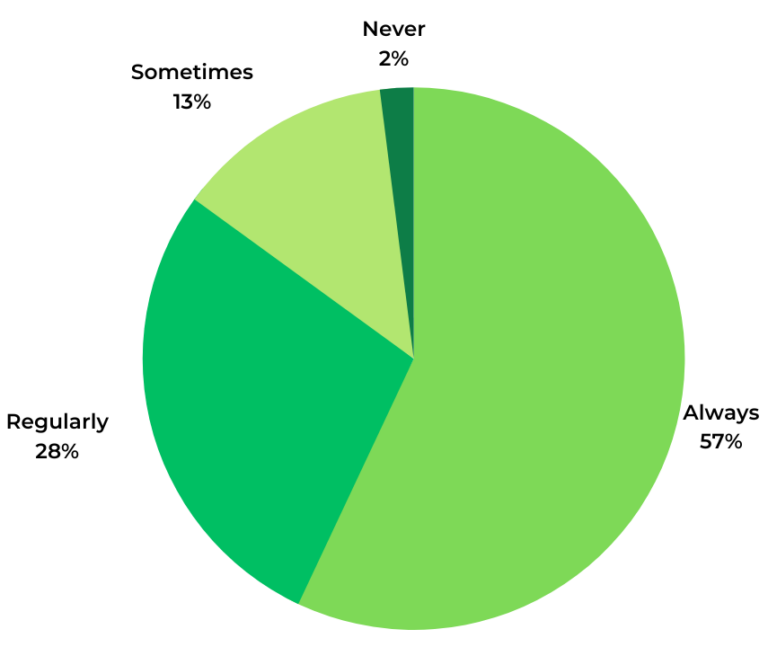
13. Almost 70% of customers read and form opinions about a product based on reviews left by other customers.
- Customers sharing their authentic marketing content about a product helps other customers make decisions.
- This is the key reason why UGC is so popular in the fashion and clothing industry. This is also wht the user generated content statistics support these claims.
User-Generated Content Statistics for Food & Beverage
14. Post Covid, 47% of customers prefer to read reviews online before buying a new food item
15. UGC included with monthly emails has shown an increase of 47% in the reviews
16. 74% of customers prefer to see UGC on the official web pages of the brand.
User-Generated Content Statistics for Home Decor & DIY
17. According to BaazarVoice, 63% of DIY customers find UGC to be the most trusted form of media.
18. More than 50% of customers learn about a new product from their friends and family
19. When DIY shoppers interact with UGC, you can see a 167% conversion lift and 250% RPV(Revenue Per Visitor) boost
User-Generated Content Statistics for Finance & Investing (B2B)
20. UGC increases conversions for financial services by 300%
21. More than 70% of B2B buyers consume video content created by users in the process of the sale
User-Generated Content Statistics for Fitness & Wellness
22. When looking for fitness and wellness equipment, user generated statistics show that 85% of people trust online reviews as much as personal recommendations.
23. Over 70% Americans look for health information and advice over the internet, thus making user generated media very important.
24. While choosing doctors, 61% of the people trust online reviews.
Start Free Trial
Highlight real-time activities like reviews, sales & sign-ups.
User-Generated Content Statistics for Education
25. More than 91% of education marketers believe that ugc helps reach potential students better.
26. In Newcastle University, it was observed that after posting ugc content, students were 3x more likely to join the Unibuddy app.
Platform-Specific UGC Stats & Trends
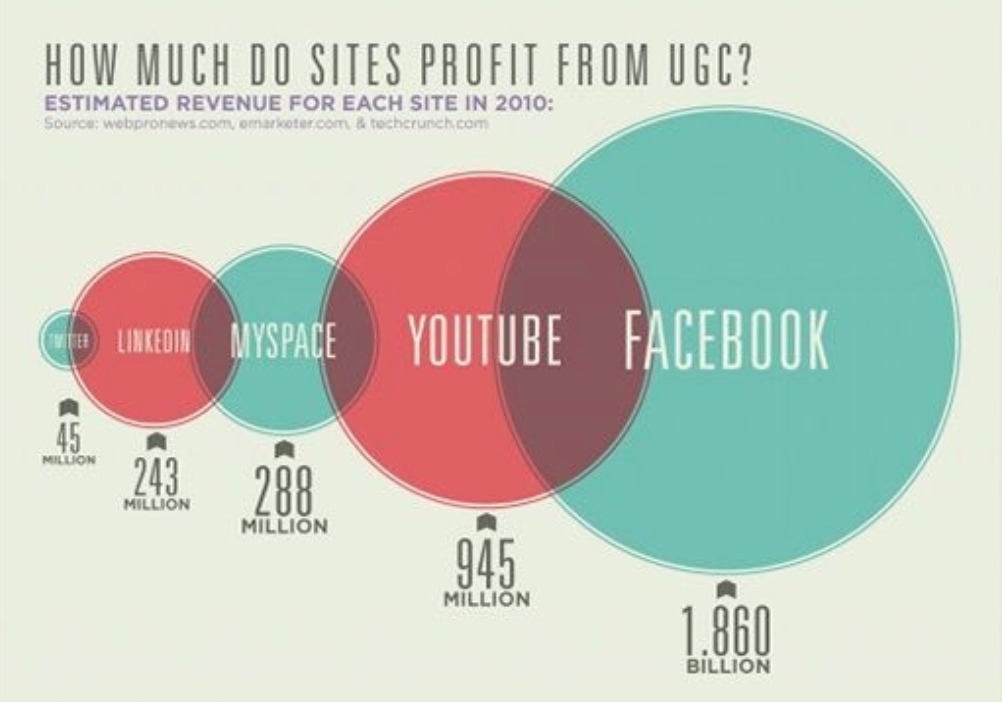
There are differences which arise when you compare user generated content stats across social media platforms .
These differences are because of a variety of reasons. It can be the number of users, age demographic of users or even the location of users.
Thus it is important to take a look at some ugc trends and statistics across various platforms:
UGC Statistics for Instagram
27. Social media posts which feature an UGC have reported 70% more engagement on Instagram than just normal paid brand ads.
- People are tired of the same old traditional ads for products claiming to be the best and life changing.
- User generated content posts are better for engagement because they tell the true story about customer experience. That is far more valuable for the customer.
28. A shocking 91% of active users on Instagram watch daily reels. This increases the customer engagement for UGC.
29. Nearly 80% of DMOs prefer to focus on UGC content on Instagram
UGC Statistics for TikTok
30. On TikTok, the user generated content is 22% more effective than brand created content
31. UGC on TikTok surpasses branded content Facebook ads by 32%
32. Compared to normal advertising user generated content on TikTok more effective by a factor of 46%
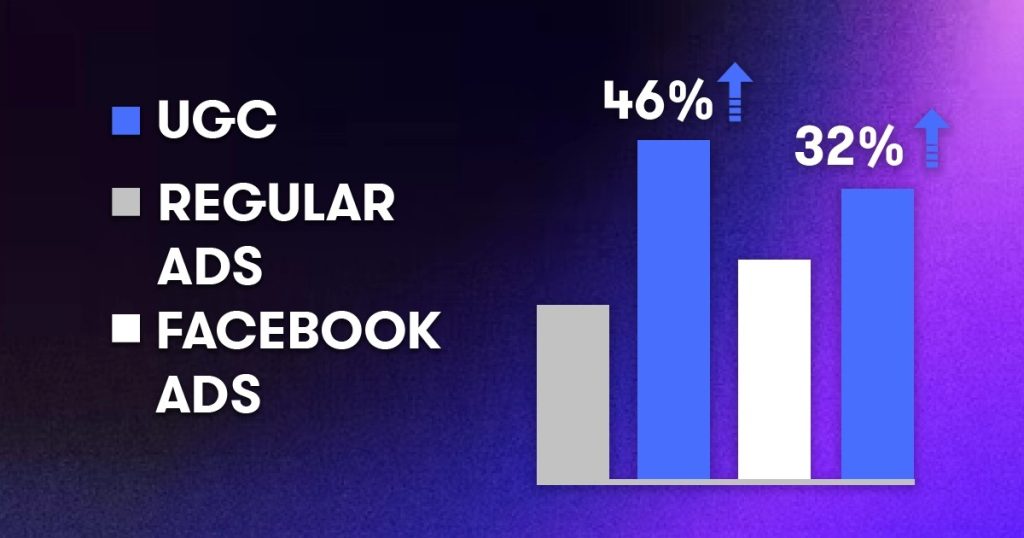
UGC Statistics for YouTube
32. On Youtube, user generated content videos and shorts get almost 10 times the views than branded content.
33. Many ecommerce marketers believe Youtube generates around 17% of the most engaging user generated content content.
34. Around 18% of the digital marketing social media channels prioritize Youtube shorts for user generated content.
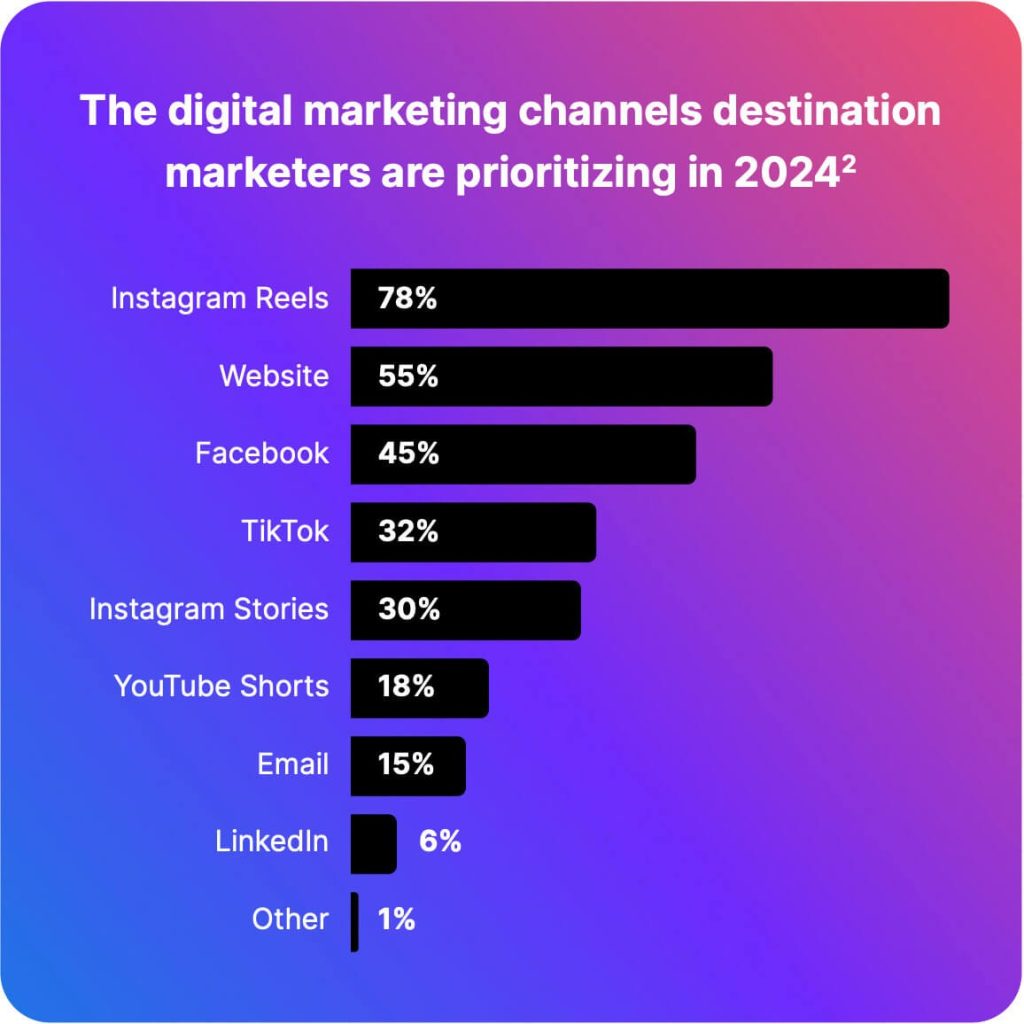
UGC Statistics for Pintrest
35. Pintrest is the 15th most popular social media app for promotions making it one of the best platforms for leveraging ugc.
36. One third of pintrest shoppers are reported to have an income of over $100K making ugc based ads a great way to leverage user generated content.
37. Pintrest has 498 million active monthly users which are real customers making it a target for world’s biggest brands to deploy thier UGC strategy
Start Free Trial
Highlight real-time activities like reviews, sales & sign-ups.
Debunking UGC Myths
There are some myths surrounding user generated content which have no basis.
For example a very common and popular myth is “Organic user generated content is Always the Best”.
Then there is another very popular myth that “I Don’t Have the Budget for user generated content”.
Take a look as we discuss user generated content statistics myth:
1. “I Don’t Have the Budget for user generated content”
The idea that you need a big budget for User-Generated Content systems (UGC) is a myth.
User generated content includes reviews, photos, and videos made by your customers, which can be free to gather and share.
Platforms like Instagram, Twitter, and Facebook let users post content about your brand at no cost.
Encouraging your customers to share their experiences and tagging your brand can generate valuable content without spending a lot.
Additionally, running simple contests or offering small incentives can motivate customers to create.
UGC is a cost-effective way to build trust and engage with your audience.
2. “Organic UGC is Always the Best”
Fiction: Organic User-Generated Content (UGC) is always the best because it comes directly from users, an authentic content, without any influence, making it more genuine and trustworthy.
Fact: While organic UGC can be authentic content, it is not always the best. Organic content may lack quality, relevance, or accuracy.
Sometimes, it can even spread misinformation. Moderated or incentivized UGC can ensure higher quality, relevance, and alignment with brand values.
Effective UGC strategies often blend organic content with curated or guided contributions of influencer content to maintain quality and reliability.
Therefore, a balanced approach including brand messages too, rather than relying solely on organic UGC, is more effective for achieving desired outcomes.
UGC Success Stories: What Makes Campaigns Resonate
There have been quite a few official brand UGC campaign success stories. Many companies got a lot of recognition and customers from their UGC campaigns and brand channels.
Take a look at some of these success stories:
1. Cult Beauty
Cult Beauty knows that people are more likely to buy their products if they see how to use them.
Watching someone else use a product can make people interested in trying it themselves.
This is why Cult Beauty often shares videos on social media made by makeup and skincare fans.
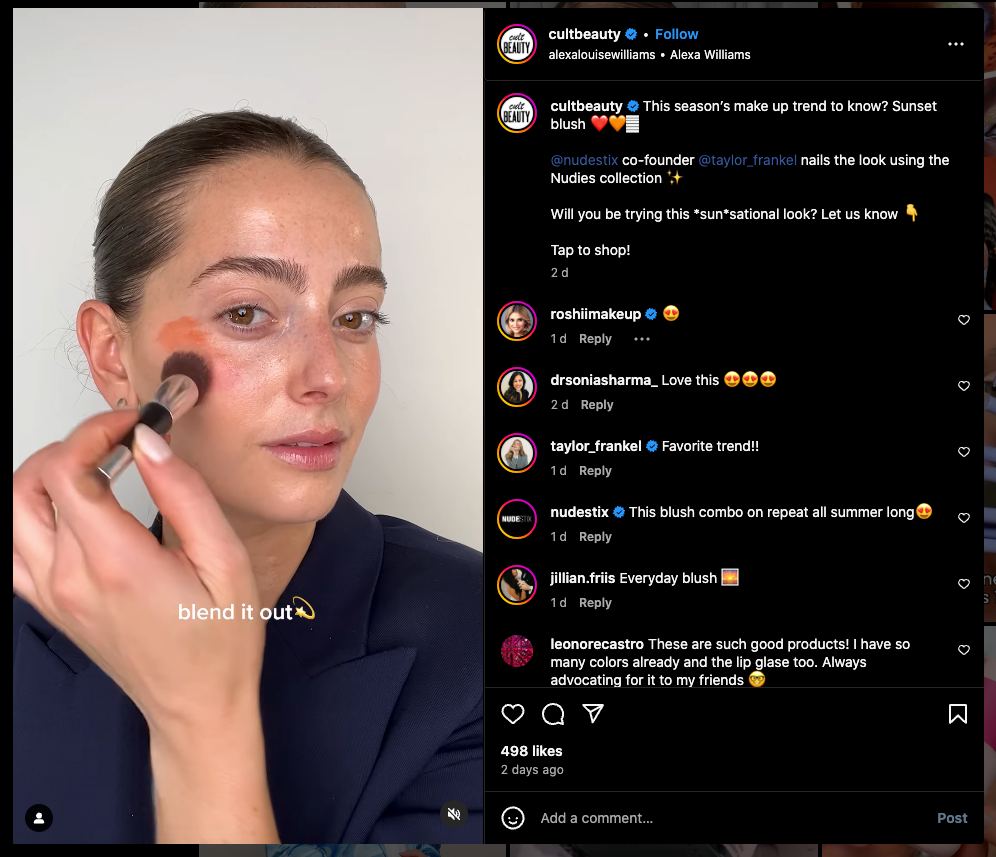
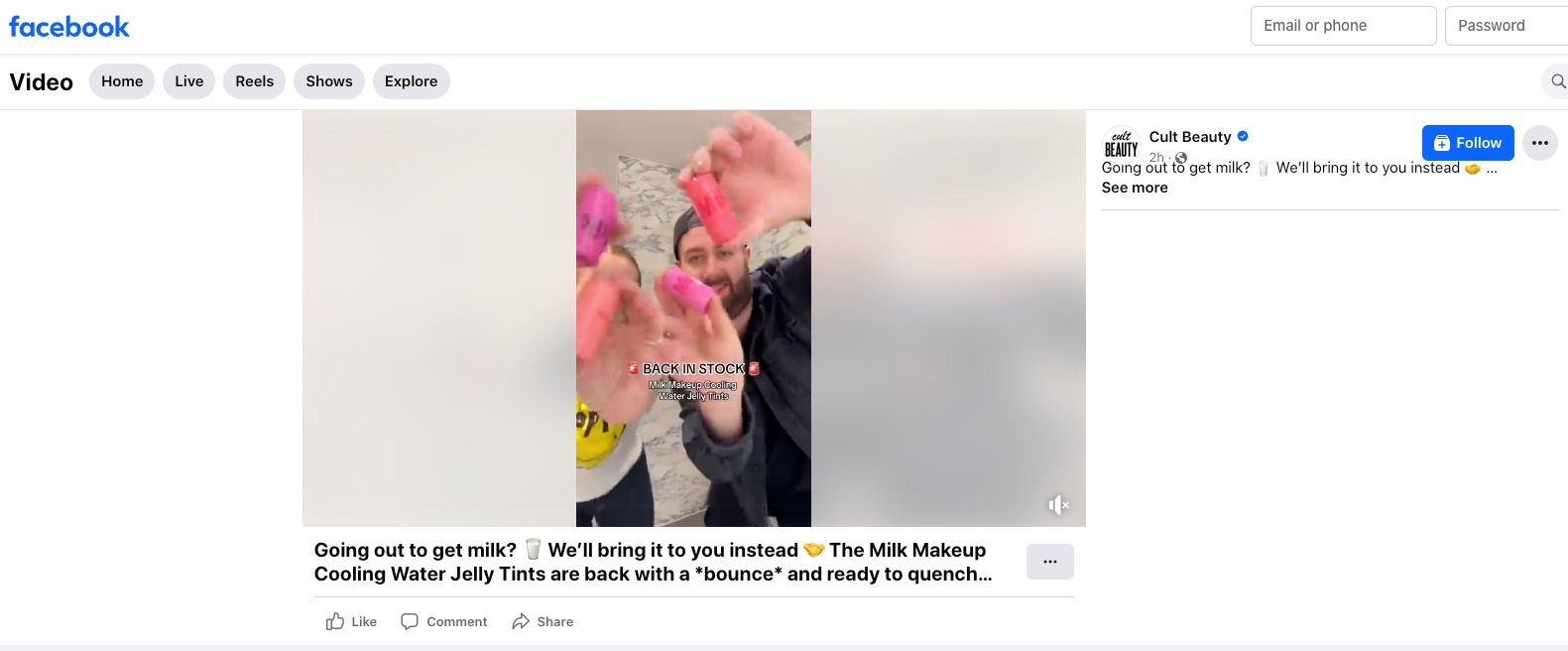
These videos are full of useful tips and demonstrations. They show different ways to use Cult Beauty products to create great looks.
This kind of content makes people curious and excited, which often leads to a better brand image and purchases.
For instance, in one video, someone asked about the brush a customer was using. It’s a great way to connect with customers on social media and help them learn more about the products available.
2. Dunkin’ Donuts
Dunkin’ Donuts is really popular on social media with more than 3 million followers on tiktok.
They are great at using social media, making fun and quirky content that sometimes makes you think.
They’re very good at connecting with young people who love their donuts and coffee through thier social campaigns.
Dunkin’ is also excellent at using videos made by their fans.

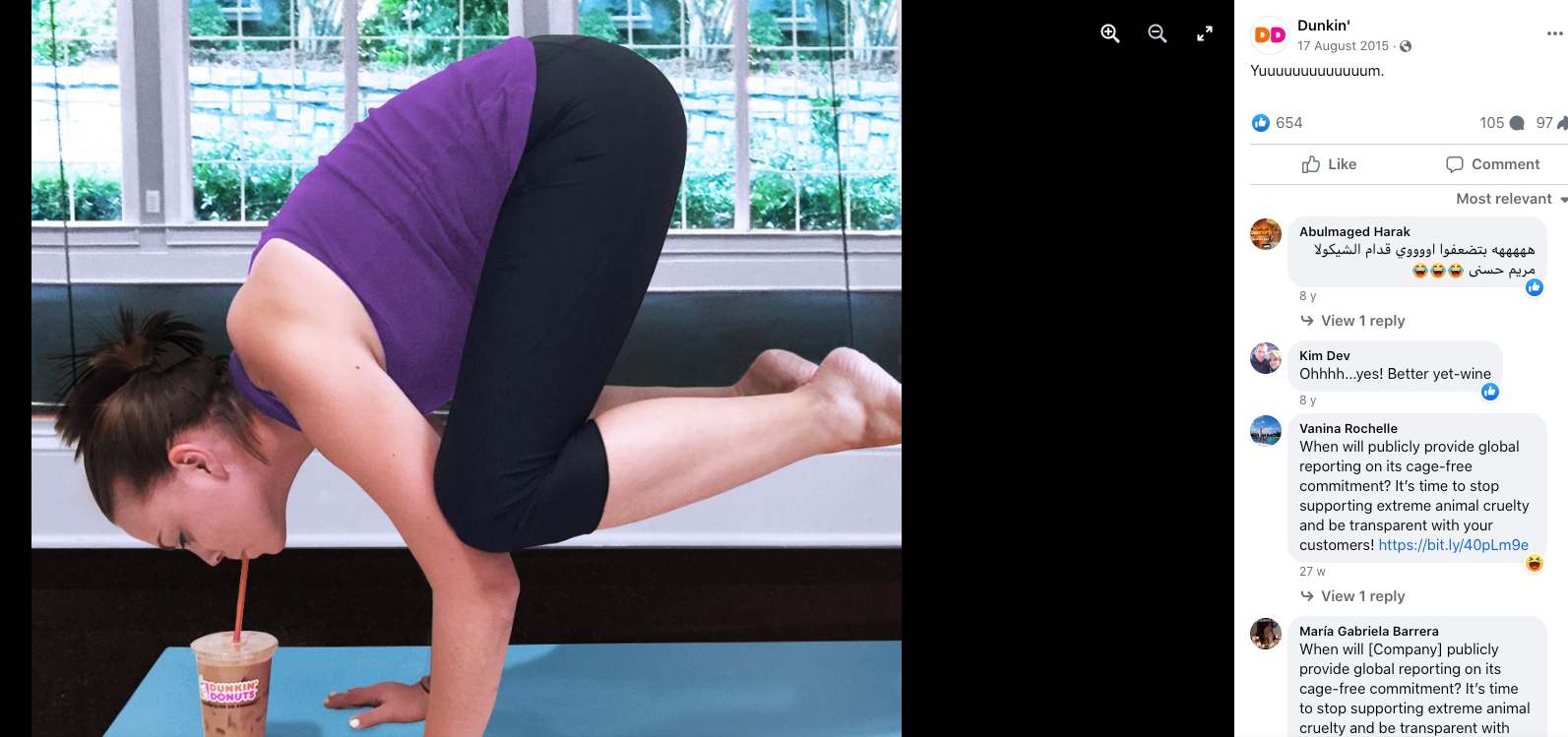
One popular video was from a TikTok user, @janellehettick, who was relaxing in a Dunkin’ Donuts hoodie and drinking soup from a big bowl.
Dunkin’ shared her video with the caption, “You gotta do whatcha gotta do,” and it went viral, getting lots of likes and comments.
This shows how Dunkin’ successfully connects with its fans through simple, user-made videos.
Key Takeaways From Viral UGC social media campaigns
From all these viral UGC campaigns there are a couple of things that stand-out.
These are some of the key points which made these campaigns a success:
1. Be Authentic: Being authentic and true in a UGC is key to having people start trusting your brand. Tell the truth and the actual user experience which can help new customers make informed decisions.
2. Be Credible: You need to make sure you can back what you are claiming. Any and every promise made in an UGC should be fulfilled. If you cannot fulfill something an existing customer claims is true in a UGC, then you lose your credibility.
3. Be Engaging: Make sure your UGC is engaging and fun to watch for the customer. Attention spans are reducing day by day and people do not give a second look to something that does not intrigue them.
Wrap up
UGC is a great way to promote your product and company. It is cheaper than traditional advertising methods and has a far better reach and customer engagement.
In fact, it has proven to be a remarkable way through which brands can connect with their target audience. Thus UGC is very important for multi-national and local businesses across industries.
Sources
Also, Read these stats if interested
25+ Popup Statistics & Trends (Conversion Focused Data)
40+ Social Proof Statistics (Latest 2024 DATA)
15+ Fake Review Statistics You Can’t Ignore







